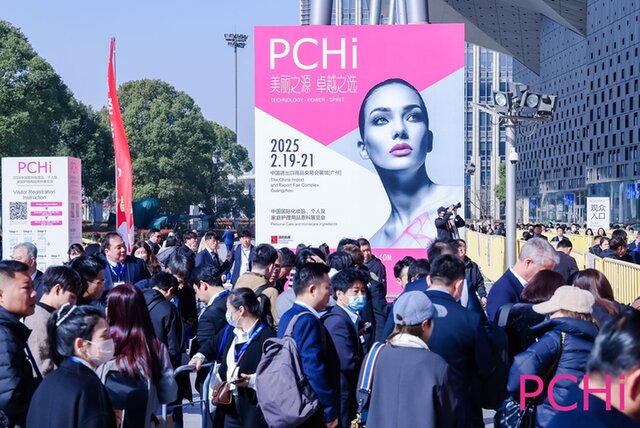EVENTS
PRE SHOW - PCHi
PCHi 2025: A Key Platform for the Personal Care and Homecare Industry
From February 19 to 21, 2025, the personal care and homecare industry will gather at the China Import and Export Fair Complex in Guangzhou for the Personal Care and Homecare Ingredients (PCHi) trade show. Organized by Reed Sinopharm Exhibitions, PCHi is recognized as China’s leading sourcing platform for the global personal care sector. This international event brings together innovative exhibitors, cutting-edge technologies, and targeted seminars, making it an unmissable opportunity for professionals interested in the latest trends and advancements in the industry. PCHi is supported by industry-leading trade associations such as the China Association of Fragrance Flavor and Cosmetic Industries (CAFFCI), the China Association of Surfactant Soap and Detergent Industries (CASSDI), and numerous international trade media.

PCHi Fountain Awards 2025: Celebrating Innovation in the Industry
One of the most anticipated highlights of PCHi is the Fountain Awards ceremony, which celebrates excellence and innovation in the cosmetics and personal care industry. The PCHi Fountain Awards aim to honor products and technologies that have made a significant impact in advancing the field. Nominations for the 2025 edition are officially open, with a submission deadline of November 22, 2024. Winners will be announced during the opening night on February 19, an event that showcases the most promising breakthroughs in the industry. For nomination details please contact Ms. Sophia Qiu at jun.qiu@reedsinopharm.com.
Evaluation Criteria and Expert Jury
Nominees for the Fountain Awards undergo a rigorous evaluation process led by an independent judging panel comprising international scientists, industry experts from prestigious institutions, and members of the CSTIC (Cosmetics Science & Technology Innovation Committee). The judging criteria include product originality, technical expertise, and market application potential. This esteemed jury reviews each nomination with the aim of recognizing projects that embody the innovative spirit of PCHi.
Pre-Registration and Opportunities for Attendees
To facilitate attendance, PCHi has opened pre-registration, offering exclusive benefits such as access to on-site content and networking opportunities with industry leaders. Attending PCHi 2025 provides visitors with a first look at product innovations, access to themed conferences, and the chance to connect with global experts. Interested professionals can pre-register via the official PCHi website or through the dedicated pre-registration link.
Conclusion
PCHi 2025 is more than just a trade show: it is a convergence point for ideas, technologies, and solutions that are redefining the future of personal care and cosmetics. For companies seeking a platform to showcase their achievements or explore new market opportunities, PCHi and its Fountain Awards provide a unique stage in an increasingly competitive and innovative landscape.
For more information and to register for the event, visit the official website https://www.pchi-china.com/en

References and notes
- Karković Marković, A.; Torić, J.; Barbarić, M.; Jakobušić Brala, C. Hydroxytyrosol, Tyrosol and Derivatives and Their Potential Effects on Human Health. Molecules 2019, 24, 2001. https://doi.org/10.3390/molecules24102001
- Nunes, A., Marto, J., Gonçalves, L., Martins, A.M., Fraga, C. and Ribeiro, H.M. (2022), Potential therapeutic of olive oil industry by-products in skin health: a review. Int. J. Food Sci. Technol., 57: 173-187. https://doi.org/10.1111/ijfs.15384